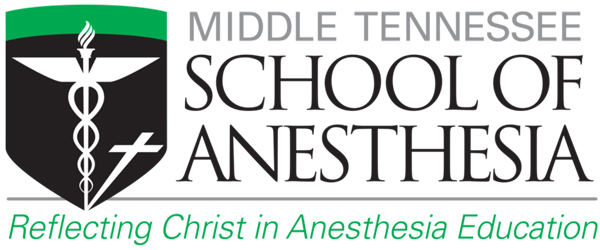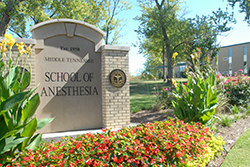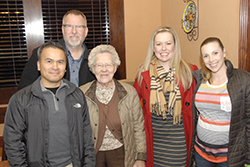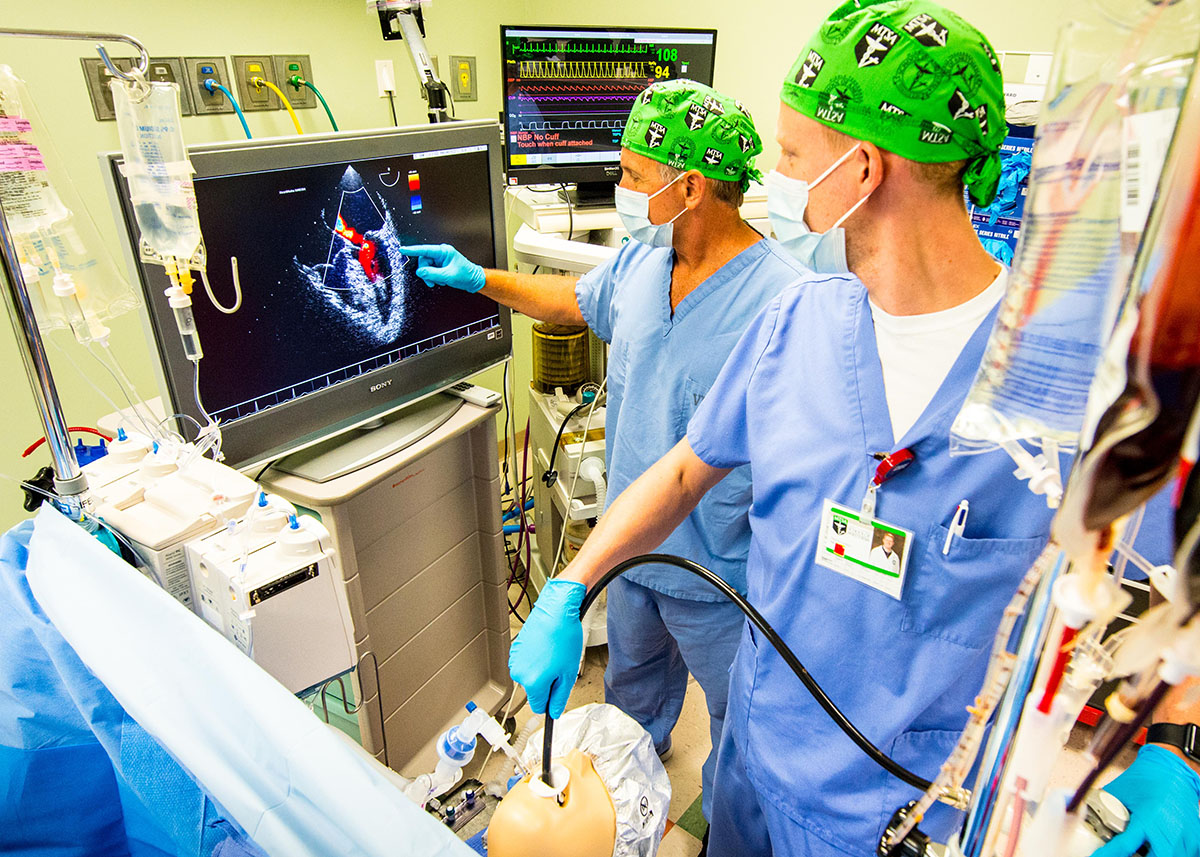
MTSA Expands Focus on Ultrasound
April 28, 2020
MTSA is rolling out multiple efforts that will expand the use of ultrasound as a tool for CRNAs, positioning the School as a leader in Point of Care Ultrasound (PoCUS) education. This includes the addition of new patient simulator technology, coupled with published research and a scheduled presentation at the AANA Congress.
PHOTO: MTSA Assistant Program Director John Shields, DNP, CRNA, (left) and Destin Goins, SRNA, assess mitral regurgitation with transesophageal echocardiography in the Simulation Skills Lab on campus. MTSA now includes Point-of-Care Ultrasound (PoCUS) as part of its curriculum and requires transesophageal and transthoracic echo training for graduation.
BodyWorks Eve Simulator
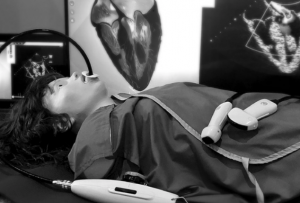 MTSA has acquired two new state-of-the-art patient simulators designed for interactive Point of Care Ultrasound (PoCUS) scenario training, an area of practice in which CRNAs are finding their roles expanding in the clinical setting, according to Ginger Miller, DNP, CRNA, Director of MTSA’s Center for Clinical Simulation.
MTSA has acquired two new state-of-the-art patient simulators designed for interactive Point of Care Ultrasound (PoCUS) scenario training, an area of practice in which CRNAs are finding their roles expanding in the clinical setting, according to Ginger Miller, DNP, CRNA, Director of MTSA’s Center for Clinical Simulation.
Complete with 100 real patient scans and more than 10,000 pathology variations across cardiac, lung, transabdominal and pelvic ultrasound, BodyWorks “Eve” is a powerful new tool for MTSA students learning how to incorporate the technology into their skillset.
“In simulation training, we can bring in models to scan normal, healthy anatomy. But Eve has all the pathologies that students might not be able to see and study because of limited opportunities in the OR,” Miller said. “We can show them what an ectopic pregnancy looks like when ruptured, what a uterine or ovarian cyst looks like, whether the patient is intubated in the esophagus versus the trachea, looking for possible pneumothorax after inserting a line, and so on. Prior to this, the only visualization a student might have is seeing a picture in a book.”
Eve also includes a comprehensive education in cardiac anatomy and echocardiography through the addition of HeartWorks TEE & TTE functionality – an area of clinical practice that continues to grow in nurse anesthesia.
“When we scan Eve’s heart using ultrasound, next to the image is an animated picture where students can see the probe, the angle of the probe, and they can click on certain areas to view the anatomical definition, how to scan it, what you’re looking for, as well as diagnostics. So it’s a powerful tool,” Miller added.
In addition, Miller said she can create case studies for students: “For example, we can show that the patient presents with normal vital signs but abdominal pain, and the students have to scan to figure out what is going on with the patient.
“We’re ahead of the curve in terms of preparing CRNAs to incorporate ultrasound into the clinical setting. Our students are going to have that knowledge to be able to either teach their colleagues and to be prepared when it’s included in the scope of practice,” Miller said.
MTSA plans to expand the use of Eve into ultrasound simulation for the DNAP program as well as the Acute Surgical Pain Management Fellowship and regional anesthesia workshops.
Research Published in AANA Journal


John Shields, DNP, CRNA, (left) and Rusty Gentry, DNAP, CRNA, authored an article that was published as the cover story in the February issue of AANA Journal. The article, Effect of Simulation Training on Cognitive Performance Using Transesophageal Echocardiography (TEE), explores simulator training versus online learning.
The research compared online learning vs. hands-on simulator based learning. The results demonstrated the benefit of simulator and online training in teaching TEE image interpretation, image recognition, and cardiac pathology identification.
Based on this evidence and student input favoring simulation, significant resources were devoted towards other ultrasound techniques using mannequins and pathologies including abdominal/chest trauma surgery and pulmonary pathology.
According to Shields, MTSA continues to lead nurse anesthesia in the effort to enhance scope of practice through advanced ultrasound training. Future work will be devoted towards expanding evidence-based practice through research and offering the best clinical education available for nurse anesthesia students and fellows.
PoCUS Workshop at AANA Congress
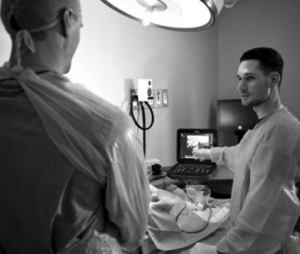
Connected with MTSA’s increased focus on ultrasound education, John Shields will lead a group of faculty and collaborators presenting a special workshop at the 2020 AANA Annual Congress taking place in San Diego in August.
The workshop will center on Perioperative Point-of-Care Ultrasound (PoCUS), offering training in basic clinical ultrasound used to assist in perioperative assessment and decision-making. It will include a two-part course with online modules and a hands-on workshop, according to Shields.
Shields will be joined by Rusty Gentry, DNAP, CRNA, Program Administrator; Bill Johnson, DNAP, CRNA, Director of the Acute Surgical Pain Management Fellowship; and Ginger Miller, DNP, CRNA, Director of the Center for Clinical Simulation. The group is bringing a new educational delivery method to the AANA with online didactic instructions, allowing for full utilization of time onsite for hands-on scanning and practice.
The knowledge-based online learning component will focus on ultrasound knowledge and scanning techniques. Core perioperative PoCUS scanning will be offered including airway, gastric, abdomen, vascular, transthoracic and basic transesophageal echocardiography. Participants will study the modules at their own pace, and the material may be accessed through smartphones and tablets.
The hands-on component will offer human models for scanning and state-of-the-art ultrasound simulators from Intelligent Ultrasound. Along with comprehensive perioperative scanning techniques, all participants will be able to perform FATE and FAST exams. Upon completion of the online and workshop components of the course the participant will receive a certificate of completion.
Check www.mtsa.edu for future announcements.


